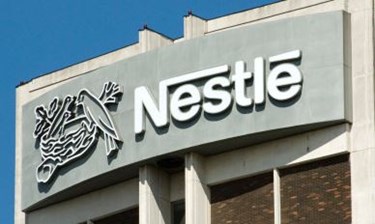Nestle's Supply Chain Improvement Is A Snap
By Karla Paris

Food-manufacturing giant along with the nation’s largest grocer, Walmart, uncover new avenues to boost sales of products to SNAP consumers while improving supply chain efficiency
There are 47 million consumers receiving benefits from the Supplemental Nutrition Assistance Program (SNAP). SNAP offers nutrition assistance to millions of eligible, low-income individuals and families while providing economic benefits to communities. Commonly referred to as food stamps, SNAP benefits equate to $74 billion in annual food sales. Walmart reaps roughly 18 percent of those benefits, or nearly $13.2 billion in annual sales.
In 2012, Nestle, a large food supplier to Walmart, began measuring the SNAP benefit against its company sales at Walmart using analytics and point-of-sales data. The data collected was used to ascertain which products SNAP consumers were purchasing along with the days of the month they were buying them. Nestle says this study does not take in account the SNAP cuts that took place late last year with the conclusion of the 2009 Recovery Act.
Through the study the company found sales increases for products, citing its Hot Pockets line, coincided with the dates of SNAP fund payments. By the fifth day of the month in an Arkansas Walmart, the product had a 200 percent increase in sales directly linked to SNAP payments.
What’s The Impact Of Big Data In The Cold Chain?
In an effort to meet SNAP consumer shopping days, Nestle worked with its supply chain and Walmart to ensure products are in stores, especially those with high demand. Cheri Dillard, supply chain manager for Nestle, says it’s a supplier’s nightmare to have SNAP funds paid and shelves empty at the retailer. The proclivity to be out-of-stock is highest just after SNAP deployment dates.
To combat this, Nestle has its own team of merchandisers out in high SNAP user stores working with Walmart Store management to make sure they have enough products on the floor during SNAP funds payment dates. Dillard says every store has its own specific replenishment plan for Nestle products, a plan that was put in place after all data was mined, including SNAP payments dates and regular payday cycles like the first and the fifteenth of each month.
Greg Kessman, supply chain director for Nestle, says getting the product to the store on time is just half the battle. Nestle also went to work setting up an alert system that is triggered when shelves are empty, but the product is somewhere in the back room. The off-shelf alert system was first tested in five Walmart supercenters in California. Nestle put a team of merchandisers in these stores to check all alerts, getting a sense of how many false positives they could expect. The alert system test triggered 575 off-the shelf alerts, 225 of those were actual out-of stock incidents. The company said it worked to get the system to an 80 percent accuracy level and now it is used throughout Nestle’s business with Walmart.
Nationwide, Nestle receives between 40,000 and 60,000 alerts daily from Walmart Stores for empty shelves. As to a return on investment, the alert system reports a $100 benefit every time it detects and corrects 10 off-shelf incidents.
